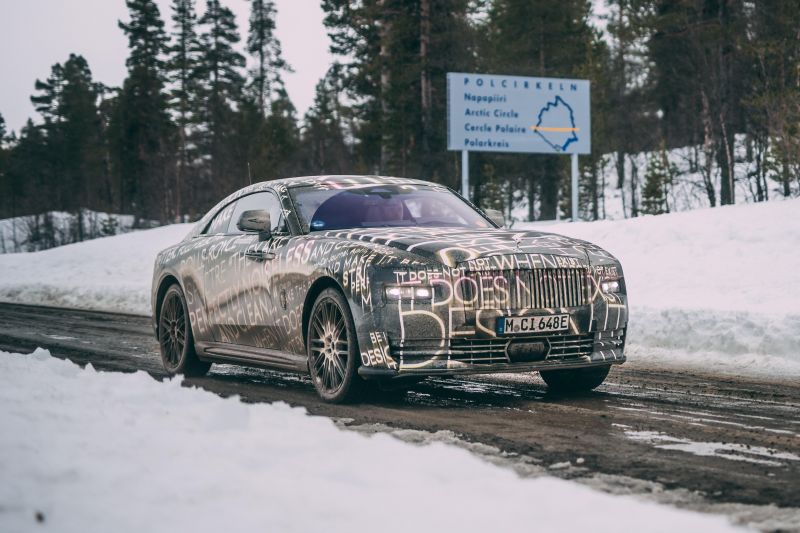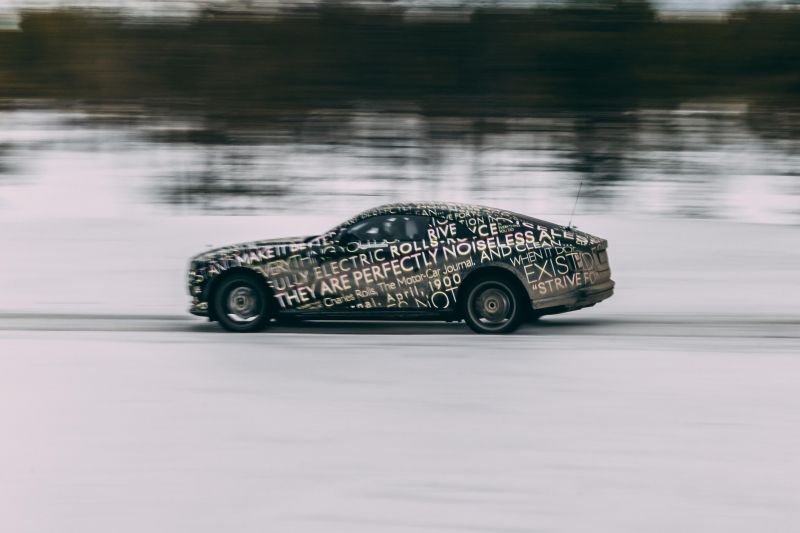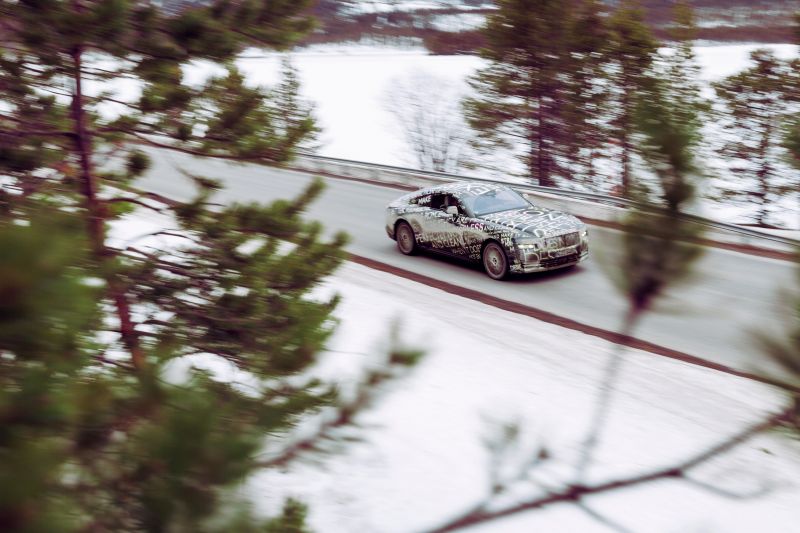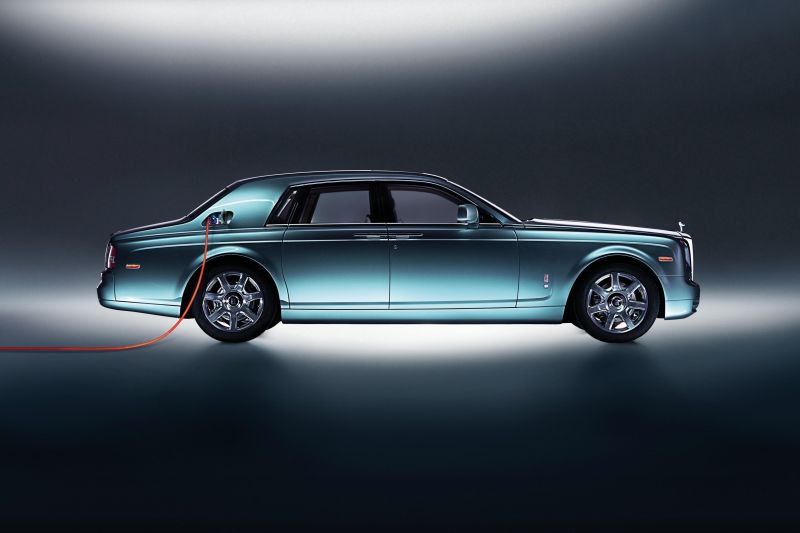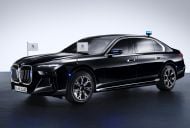All-electric Rolls-Royce skids on ice? Yes, please.
Rolls-Royce has concluded winter testing of its electric Spectre grand tourer at a specialist facility in Arjeplog, Sweden ahead of first deliveries in the fourth quarter of 2023.
The Spectre is the automaker’s first production electric vehicle (EV), and represents the start of Roll-Royce’s transition to an electric-only range by 2030.
Said to be a spiritual successor to the Phantom Coupé, the Spectre two-door coupe is built on Rolls-Royce’s new aluminium Architecture of Luxury, which also underpins the current Phantom, Ghost, and Cullinan.
Rolls-Royce is aiming to complete a total of 2.5 million kilometres of development driving in the Spectre, which apparently equals 400 years of use, before the testing program is complete.
“Today, I can confirm that 25 per cent of this journey is now complete, and the results have met our most ambitious expectations,” said Rolls-Royce CEO Torsten Müller-Ötvös.
At the testing facility around 55km from the Arctic Circle, the Spectre has to deal with temperatures around the -30 degree mark. A number of carmakers use Arjeplog to torture test their cars due to the consistently freezing temperatures.
Rolls-Royce says every one of its new cars begins its testing in the winter as it’s a great for noise, vibration and harshness (NVH) tests of the door rubbers, bushing compounds, fastening materials, and bonding agents.
It also gives engineers a chance to see the efficiency of the car’s heating, ventilation, air conditioning and cooling systems.
Rolls-Royce says its engineers work to more relaxed timeframes than are common in the industry, which allows them to really dial into how the Spectre should “think, behave and communicate like a Rolls-Royce worthy of the marque”.
During this time the engineers are working on the Spectre’s chassis-control systems, powertrain management, and electronics control.
By doing driving tests on ice, Rolls-Royce aims to deliver the “waftability” – that’s effortless comfort in all conditions, from what we can ascertain – that defines the brand’s experience.
The Rolls-Royce engineers have also designed a secondary use for the Spectre’s battery pack, which is 700kg worth of sound deadening.
On the design front, the Spectre will feature a split headlight look that’s reminiscent of the Phantom Coupé. It’ll be the first Rolls-Royce to be fitted with 23-inch wheels since 1926.
Thanks in part an aerodynamically-designed Spirit of Ecstasy bonnet ornament, the Spectre in prototype form also has a drag coefficient of 0.26.
Under the skin, the Spectre has a total of seven kilometres worth of cabling to connect and create more than 1000 electronic and powertrain functions with no centralised processing.
Although the Rolls-Royce Spectre won’t arrive until the fourth quarter of 2023, the company has already started taking deposits in Australia.
Rolls-Royce wouldn’t be drawn into how many it’s taken, either in terms of number of deposits or their monetary value, as it traditionally doesn’t like to talk sales figures.
However, regional sales manager Ian Grant said in January 2021 there’s been a “pleasing” number.
Rolls-Royce is now embarking on current journey to an all-electric future, it’s no stranger to electric power though.
Co-founder of the original Rolls-Royce Limited company, Charles Rolls, explored the possibilities of EVs back at the start of the 20th century.
“The electric car is perfectly noiseless and clean. There is no smell or vibration, and they should become very useful when fixed charging stations can be arranged,” said Mr Rolls in an interview with The Motor-Car Journal in April 1900.
“But for now, I do not anticipate that they will be very serviceable – at least for many years to come.”
After decades of purely petrol power, Rolls-Royce explored EVs in 2011 with the Phantom Experimental Electric (aka 120EX), which was a fully-operational, road-legal prototype of an electric Phantom albeit one not intended for production.
Based on the contemporary Phantom, the 102EX had a pair of electric motors on the rear axle producing a total of 290kW of power and 800Nm of torque.
Its 0-60mph (0-97km/h) time was said to be under eight seconds, considerably slower than the V12 Phantom’s 5.7 second sprint.
Its biggest downside – and reportedly the reason development was stopped – was its range, at just 200km.
Rolls-Royce then debuted the Vision Next 100 (aka 130EX) concept car in 2016, again an experimental car powered by an electric powertrain albeit with a unique platform and autonomous driving technology
MORE: Rolls-Royce going electric-only by 2030, led by 2023 Spectre
MORE: Rolls-Royce accepting deposits for electric Spectre in Australia


